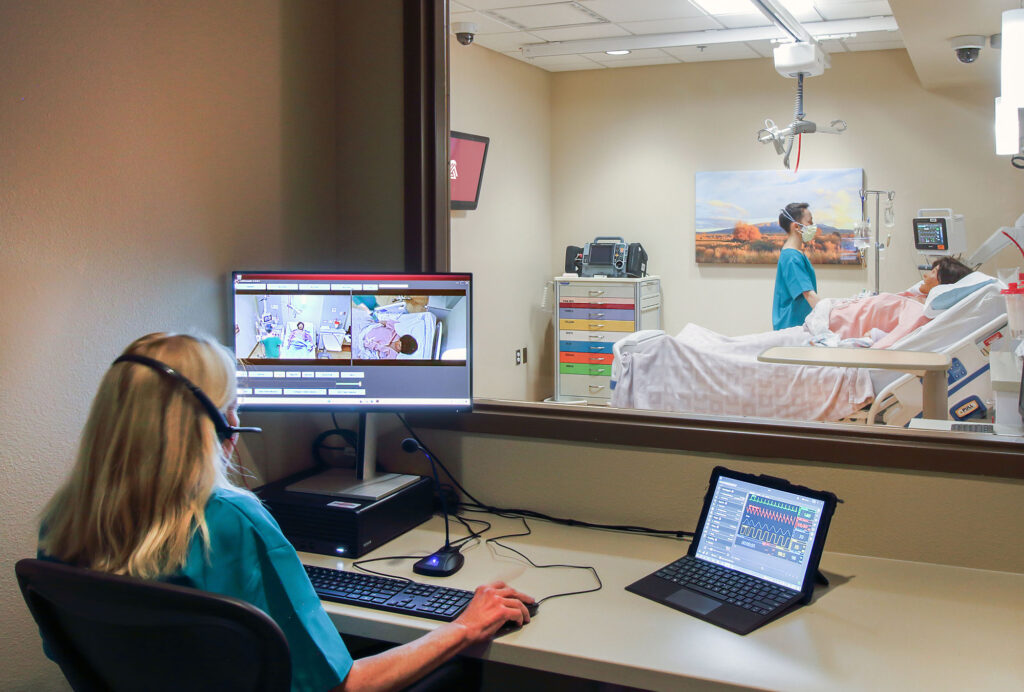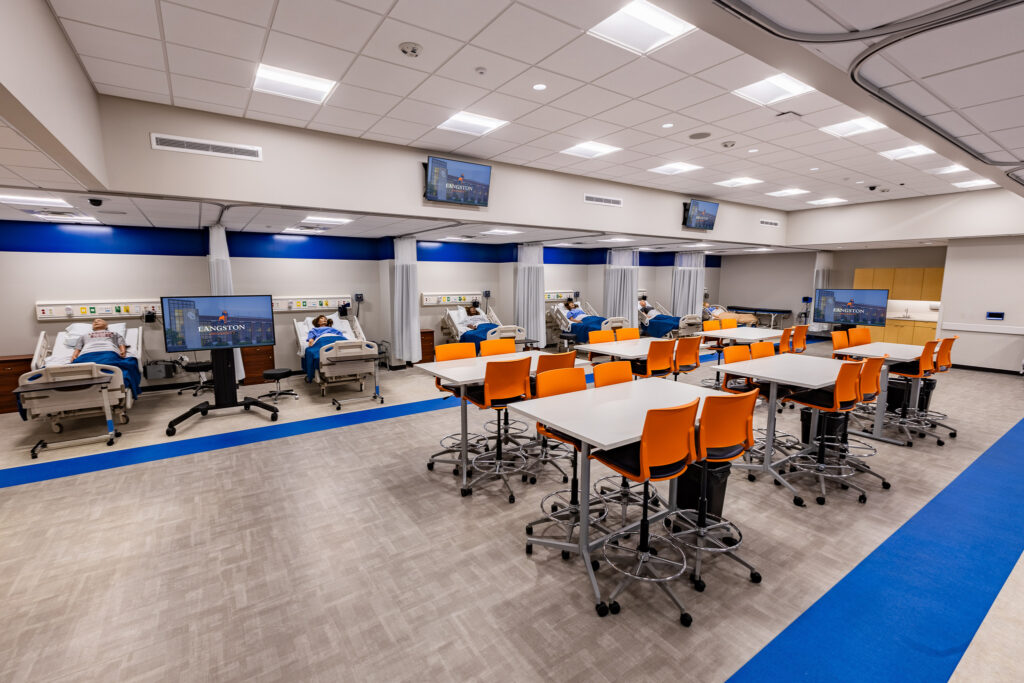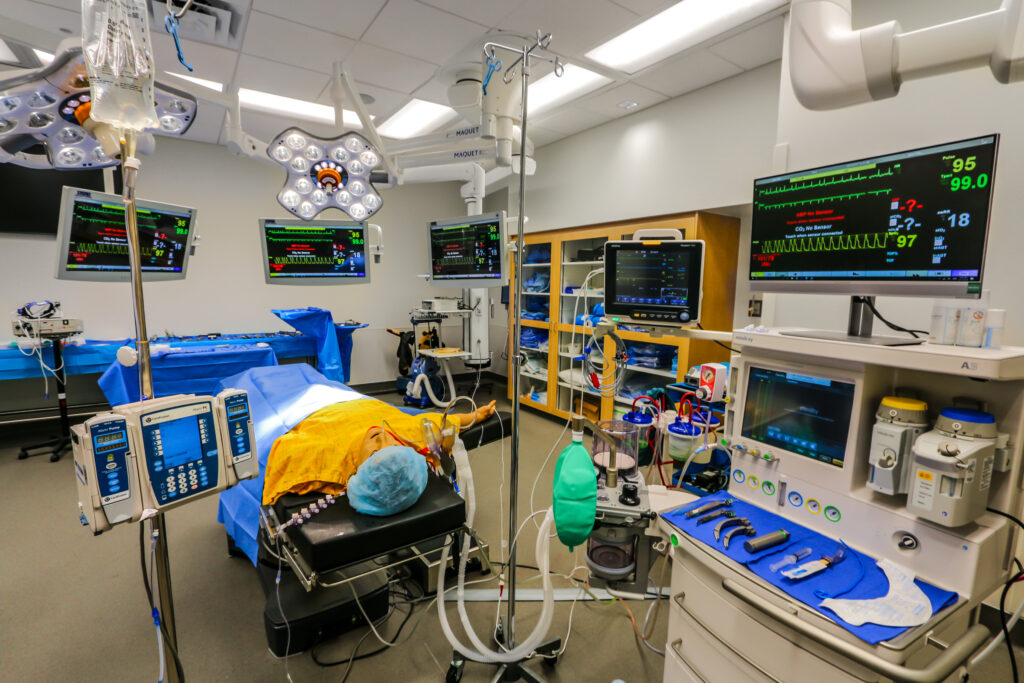Healthcare is evolving at a rapid pace and nursing education must keep up by providing realistic, immersive, and technology-driven training environments. Simulation learning has emerged as a vital tool for bridging the gap between classroom theory and clinical practice. By leveraging cutting-edge technologies—from virtual and augmented reality to high-fidelity simulation and advanced audiovisual (AV) systems—nursing programs can enhance clinical judgment, build confidence, and ultimately improve patient outcomes.
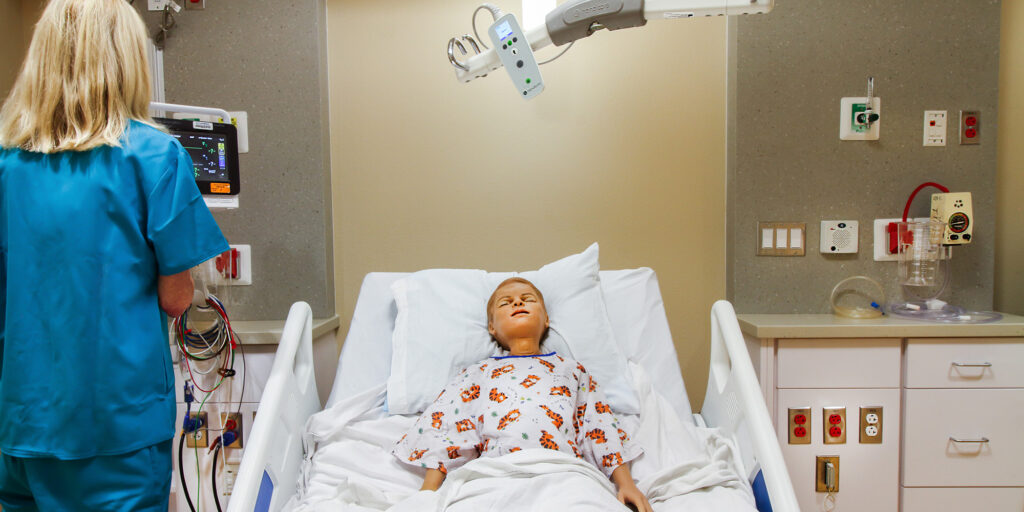
The Role of Technology in Simulation Learning
Advances in technology have revolutionized nursing education by making simulation learning more accessible, engaging, and effective. Screen-based virtual simulations, for example, allow nursing students to practice clinical scenarios in a safe, repeatable environment that closely mimics real-life patient care. These virtual tools not only sharpen clinical judgment but also help students gain the confidence they need when transitioning into real clinical settings.
Key technologies shaping simulation learning:
High-Fidelity Simulation Manikins
High-fidelity simulation manikins are essential in nursing education. These lifelike manikins replicate the responses of real patients, including vital signs, speech, and even physical movements. By interacting with these advanced manikins, nursing students can perform procedures like intubation, CPR, and more in a risk-free, controlled environment. The immediate feedback provided by these manikins helps students understand their mistakes, improving both technical and critical thinking skills.
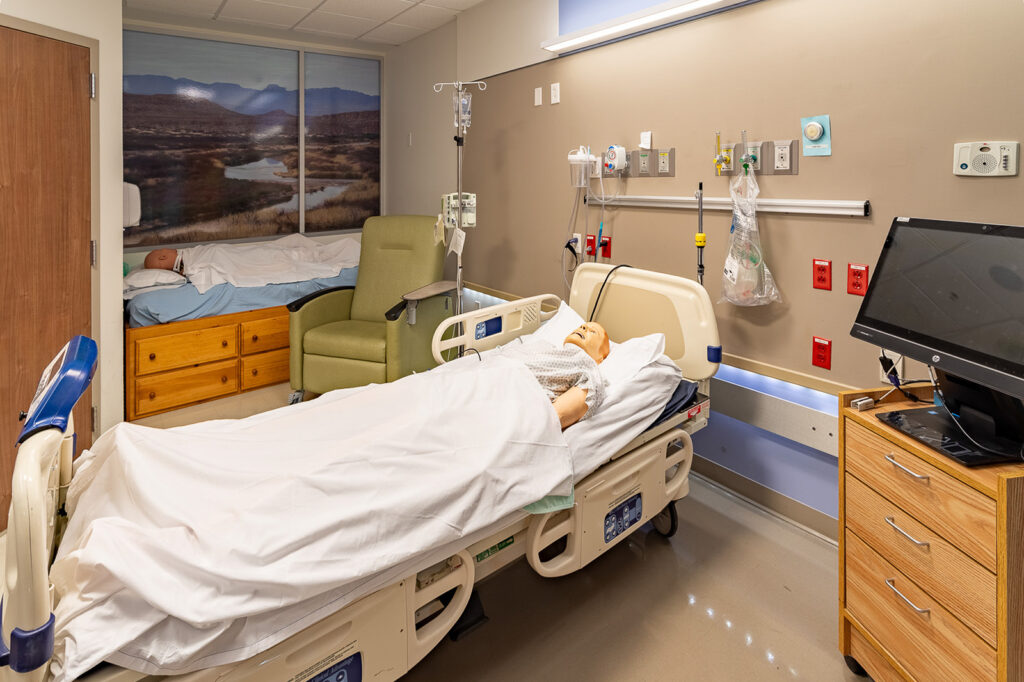
Immersive Virtual Reality (VR) and Augmented Reality (AR) Headsets
Virtual Reality (VR) and Augmented Reality (AR) headsets are revolutionizing healthcare education by providing students with immersive, hands-on training opportunities. These technologies allow students to practice procedures such as surgery or patient care in a safe, controlled virtual space. VR and AR not only offer unparalleled immersion but also enable students to revisit and refine skills in a way that traditional methods simply cannot match.
Interactive AV Systems and Video Walls
Interactive AV systems, such as large video walls or high-definition displays, enable students to view complex procedures, patient interactions, and real-time responses in a more detailed and engaging way. With the use of interactive touchscreens, instructors can adjust and control simulation scenarios, ensuring that learning moments are effectively highlighted. Video walls can also serve as a shared learning platform, where all participants, no matter where they are in the room, can see critical elements of the simulation clearly.
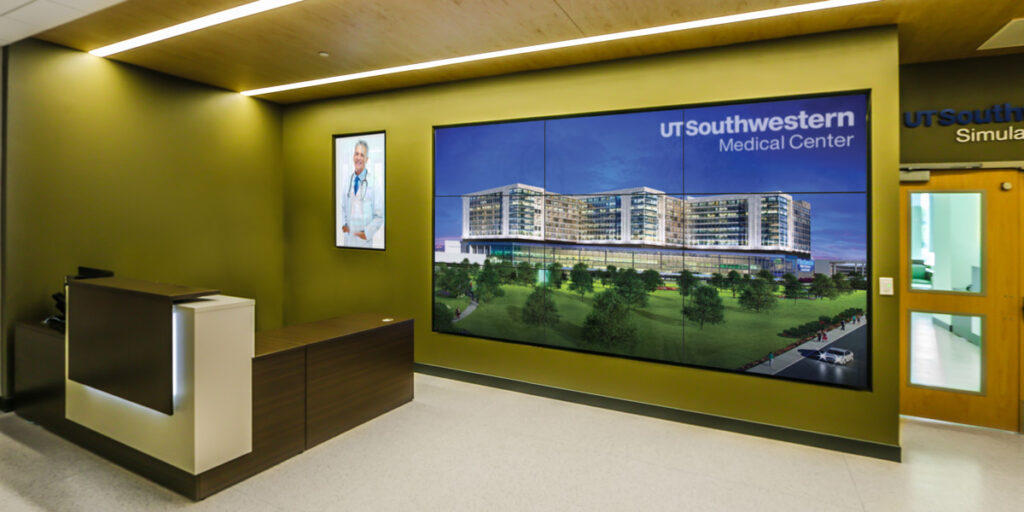
Surround Sound Audio Systems
In a clinical setting, auditory cues can be just as important as visual ones. By simulating the sounds of a hospital—such as patient monitors, alarms, and medical equipment—surround sound systems make simulations feel more realistic. These systems help students adapt to high-stress environments by replicating the noise and chaos that often accompany real-life medical emergencies. As a result, students learn to focus, make decisions, and respond appropriately to their surroundings.
Audio Visual Control Systems
Audio Visual (AV) control systems allow instructors to control the audio, video, and interactive elements of a simulation from a centralized point. Whether switching between video feeds, adjusting lighting, or managing real-time communication, AV control systems make it possible to execute multi-faceted simulations smoothly. By streamlining the management of these systems, instructors can focus on teaching, rather than technical troubleshooting, ensuring that students get the most out of their learning experience.
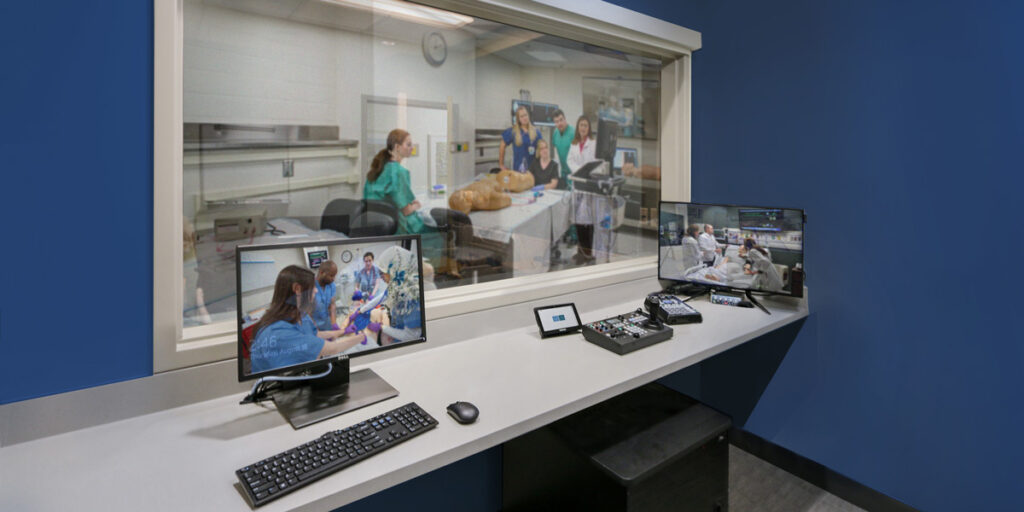
Interactive Touchscreens and Digital Whiteboards
Interactive touchscreens allow both students and instructors to interact directly with content during simulation sessions. These devices can display diagrams, medical charts, or real-time data from the simulation, enabling collaborative learning. Students can engage with the content by drawing, writing, or annotating, further enhancing the depth of understanding. By combining interactive elements with simulation scenarios, these tools help reinforce learning and make complex medical concepts more accessible.
Simulation Recording and Playback Systems
Recording and playback systems allow instructors to capture entire simulation sessions and later review them with students during debriefing. The ability to review and analyze performance in real-time provides critical insights into what worked well and where improvements can be made. Students can reflect on their decisions, receive constructive feedback, and track their progress over time. Simulation recording not only enhances the learning process but also ensures that no teaching moment is missed.
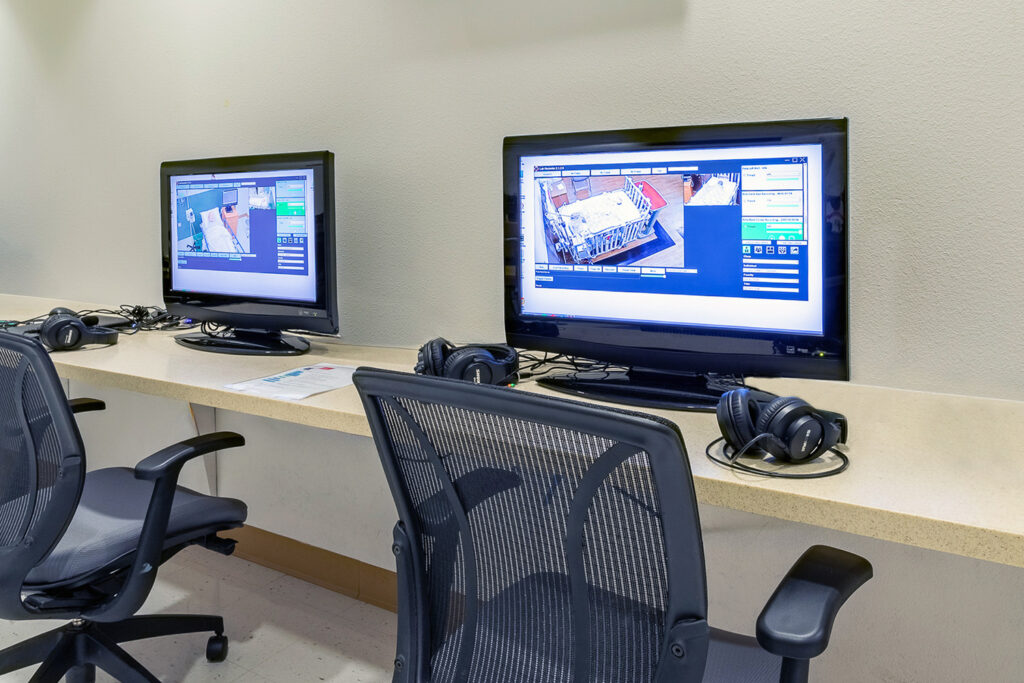
Mobile AV Equipment and Wireless Devices
Mobile AV solutions, such as wireless microphones and remote cameras, provide flexibility in simulation labs by allowing instructors to move freely between rooms or monitoring stations while still interacting with students and managing the simulation. Wireless technology enables real-time feedback, recording, and communication without the limitations of fixed equipment. This freedom helps instructors adapt to the needs of each session, ensuring that students receive personalized guidance, whether they are practicing a particular skill or working through a complex scenario in a multi-room setting.
Customizable Lighting Systems
Customizable lighting systems allow instructors to alter the lighting to match specific scenarios—whether dimming the lights to simulate a night shift or brightening them to reflect an emergency room environment. By adjusting the lighting to reflect different times of day or clinical situations, instructors can enhance the realism of the simulation and guide students through a variety of clinical scenarios, preparing them for the unpredictable nature of real-world healthcare settings.
Benefits of Simulation Learning for Nursing Education
Simulation learning offers several compelling benefits for nursing schools and healthcare programs:
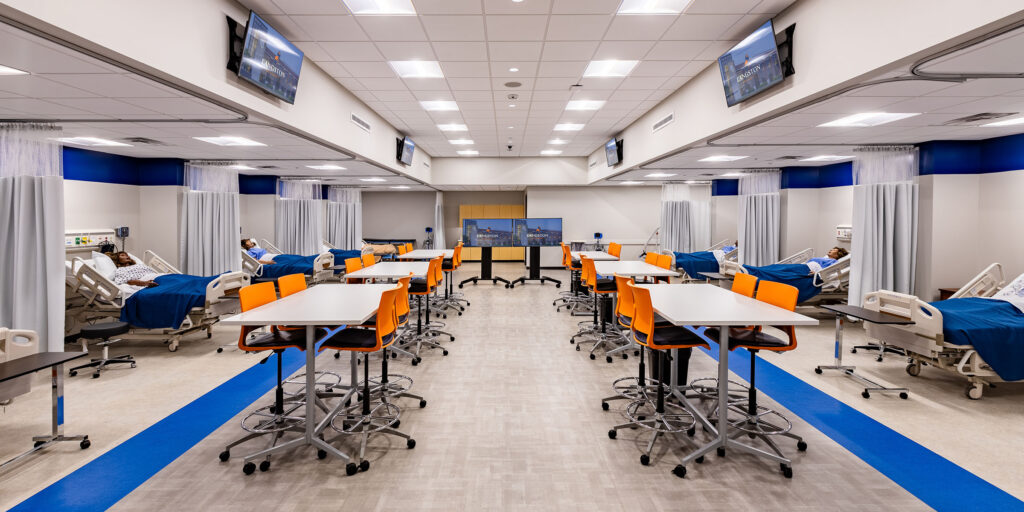
- Immediate Feedback and Debriefing:
Advanced simulation systems provide real-time feedback, identifying areas of improvement and reinforcing positive behaviors.
- Safe and Controlled Learning Environment:
Simulation labs allow for errors and subsequent learning in a controlled setting, reducing risks associated with direct patient care.
- Adaptability to Various Learning Styles:
The integration of visual, auditory, and kinesthetic learning methods ensures that all students benefit from simulation training.
- Enhanced Clinical Judgment and Decision-Making:
By repeatedly practicing in simulated environments, students can refine their ability to assess situations, analyze patient data, and make informed decisions without the risk of harming real patients.
- Increased Confidence:
Studies and expert insights reveal that simulation-based learning can significantly boost nursing students’ self-confidence and preparedness for clinical rotations and professional practice.
These benefits directly contribute to improved patient care quality, better patient safety outcomes, and a smoother transition for nursing students into clinical roles.
Real-World Successes in Simulation Learning
Ford AV has a proven track record of transforming simulation learning spaces for healthcare institutions across the United States. Our team collaborates with top medical schools and healthcare educators to design AV-integrated simulation centers that are both functional and innovative.
University of Texas Health Science Center
Ford AV partnered with the University of Texas Health Science Center to create a state-of-the-art simulation lab that enhances nursing education. The facility is equipped with real-time video capture and communication tools, allowing for seamless interaction between instructors and students. This setup not only improves learning outcomes but also allows for comprehensive performance reviews during debriefing sessions, reinforcing key clinical lessons.
Langston University, Tulsa Allied Health
Ford AV designed a comprehensive AV system for the Langston University Tulsa Allied Health Simulation Center. This facility integrates advanced technologies, including high-fidelity manikins and real-time audiovisual feedback systems, ensuring that students experience realistic, high-quality simulations. The AV system supports both student learning and instructor guidance, allowing for an interactive, dynamic educational experience.
University of Texas Southwestern Medical Center
Ford AV was responsible for creating the audiovisual infrastructure for the University of Texas Southwestern Medical Center’s new simulation wing. This facility is equipped with cutting-edge technology that enhances learning by providing real-time feedback, video analysis, and seamless communication. The system is designed to support the dynamic needs of both instructors and students, ensuring an immersive, high-impact educational experience.
Presbyterian Health Simulation Center
The Presbyterian Health Simulation Center collaborated with Ford AV to integrate advanced AV solutions into their state-of-the-art training facilities. The AV infrastructure supports a variety of medical simulation scenarios, from emergency care to routine procedures, helping students develop the clinical judgment they need in real-life situations. The system provides a comprehensive approach to simulation learning, offering instant feedback and detailed analysis.
These highlight Ford AV’s commitment to delivering high-quality, customizable AV solutions for simulation-based learning environments. Our experience ensures that each healthcare simulation center is equipped with the right technology to provide an immersive and impactful learning experience for students.
Partner with Ford AV to Elevate Your Simulation Center
Simulation learning represents a paradigm shift in nursing education, marrying technology with hands-on experience to prepare nurses for the complexities of modern healthcare. Through the use of virtual simulations, high-fidelity manikins, and innovative AV integration, educational institutions can offer a learning experience that is both safe and profoundly effective.
By partnering with Ford AV, you can create a cutting-edge simulation center that empowers your students and instructors to reach their full potential. Our team of experts will work with you to design and implement AV solutions that meet your specific needs.
Partner with America’s Leading AV Technology Company
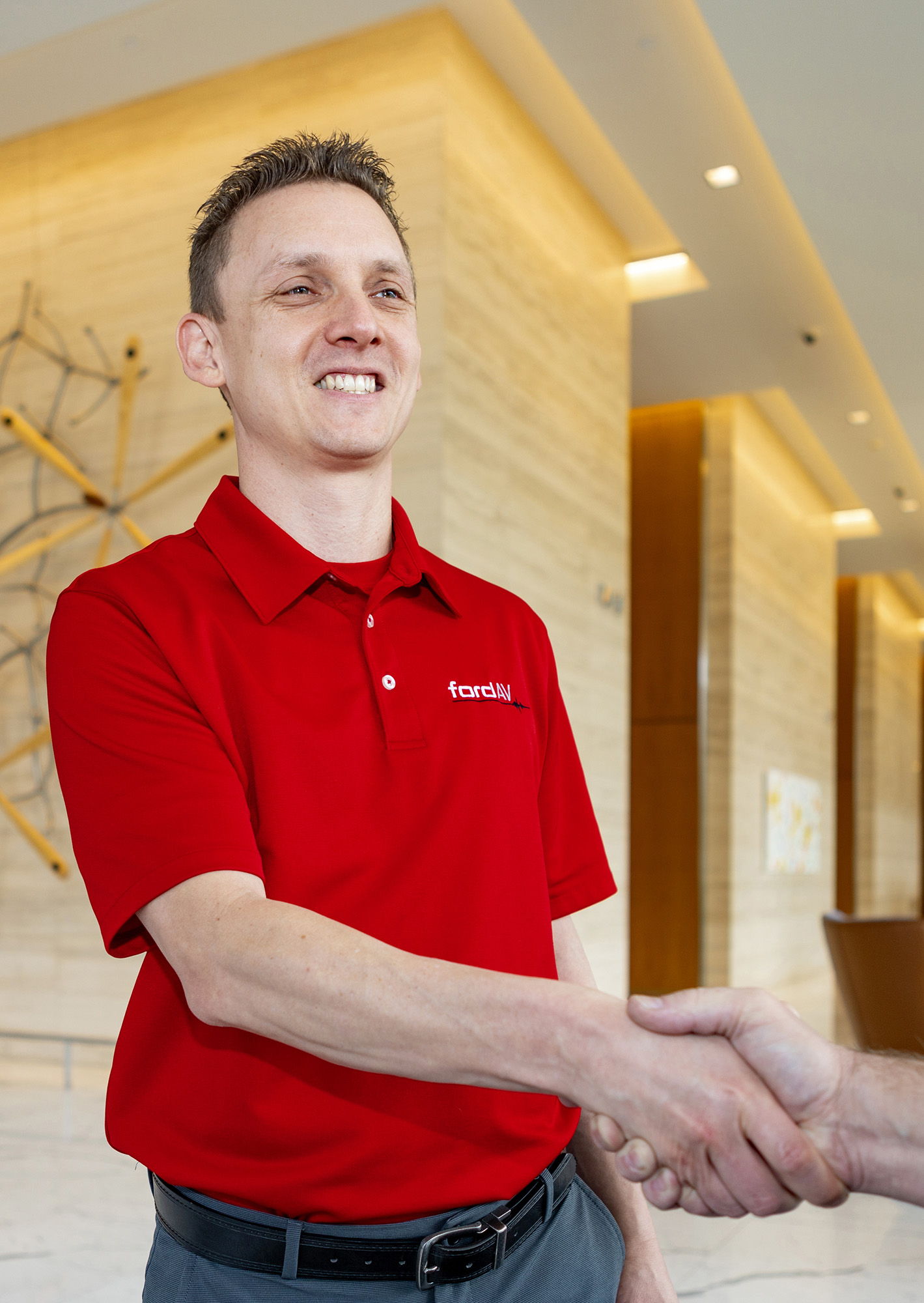
- 50+ Years of Experience – Designing and integrating innovative audiovisual systems for organizations across multiple industries.
- Nationwide AV Services – Local teams supported by a national network for dependable AV installation, maintenance, and ongoing support.
- Comprehensive Expertise – From collaboration rooms and video conferencing systems to digital signage, enterprise control systems, and managed AV services.
- Scalable, Future-Ready Solutions – Engineered for reliability, flexibility, and seamless user experiences.
- Proven Performance – Trusted by Fortune 500 companies, universities, government agencies, houses of worship, and more.
Ready to connect with Ford AV professionals? Fill out the form below to transform your space with expertly designed and integrated AV technology.

